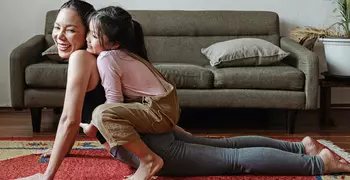Food & Nutrition for Survivorship

A nutritious, well-balanced diet is vital to maintain energy, support a healthy immune system, and repair damage. These are all very important if someone is living with a cancer or rare disease diagnosis or in the role of family caregiver for someone with a serious diagnosis.
Nutrition can be a confusing topic and it is difficult to know where to start because there is a lot of information available and it is hard to know what is factual and relevant. This section will give an overview on establishing a nutritious foundation of knowledge and how to set up your pantry for success. In general, people with cancer and rare disease diagnoses can follow the same foundational nutrition information that benefits most people. Talk with a member of your healthcare team to better understand the nutrition guidance that’s right for you. The experience of having cancer and undergoing cancer treatments can take on many different forms. For some, the challenge may be taking in enough calories to maintain a healthy weight due to low appetite or nausea. For others, the challenge may be changing their body composition (building muscle and reducing fat) to reduce the risk of cancer recurrence. Only your healthcare team can tell you what’s right for you. The information in this section is based on the best available evidence and written to benefit a wide audience.
Simple Guidelines:
Here are some simple guidelines when thinking about what foods to eat and how to navigate the grocery store:
Eat mostly whole foods
Whole foods mean foods that come in their original form, rather than broken down and processed. For example, a head of broccoli, an apple, whole grain rice, or an egg.
Eat colorful meals
Choose to build a meal that has a variety of colors in it, which will often come from fruits and vegetables. Phytonutrients give fruits and vegetables their vibrant colors and provide vitamins, minerals, fiber, and antioxidants.
Eat healthy fats
Fat gets a bad reputation but it is vital for a healthy diet. Fats help build cell membranes and the covering of nerves. They facilitate the transport of essential vitamins and minerals into cells, and they are needed for blood clotting, muscle movement, and inflammation. Enjoy fats found in olive oils, nuts, seeds, vegetables, and fish.
Shop on the outside aisles
The outermost aisles of grocery stores is usually where the most nutritious and whole foods are kept. This will include eggs, dairy, meats, seafood, fruits and vegetables. Fill up on these ingredients and leave the middle aisles for last.









